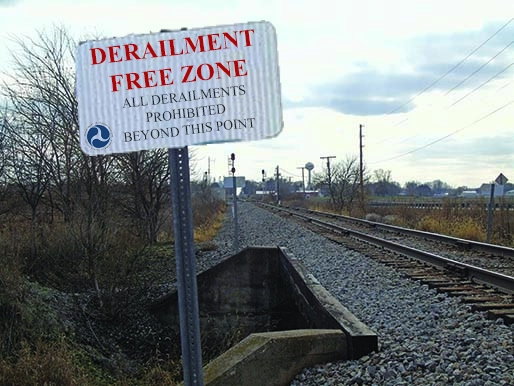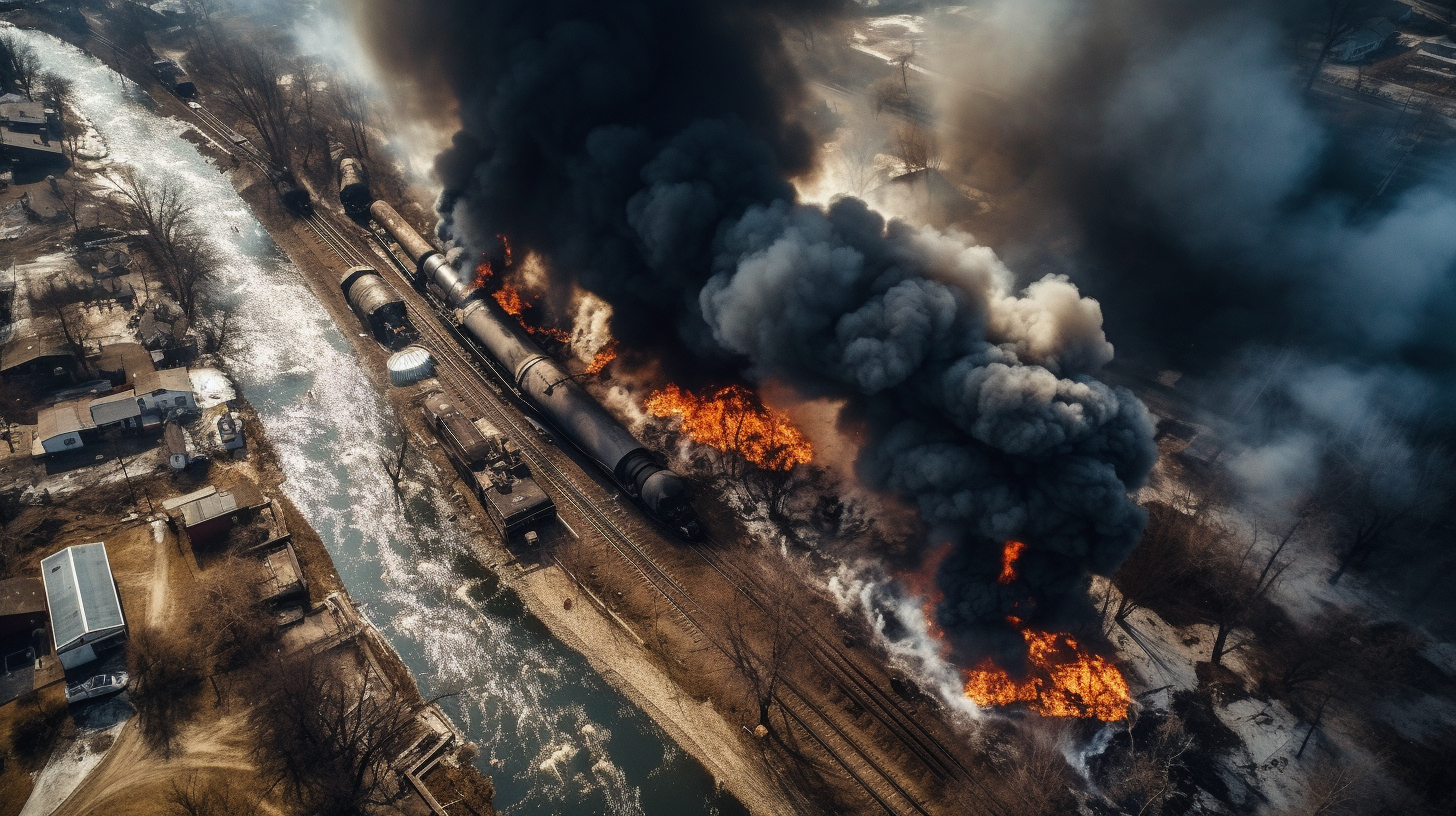In a groundbreaking and seemingly foolproof move, the Federal Railroad Administration (FRA) has taken a stand against the recent surge in financially and environmentally devastating train derailments. Their solution? Placing signs at all train stations that read, “Derailment Free Zone: All Derailments Prohibited Beyond This Point.” The FRA is confident that this innovative approach will put an end to the dangerous trend of derailments once and for all.

The decision comes after a string of high-profile derailments that have not only caused significant financial losses but have also raised concerns about the environmental impact of such incidents. The FRA believes that these new signs will serve as a powerful deterrent, ensuring that trains remain on track and preventing any further catastrophes.
When questioned about the effectiveness of this measure, FRA spokesperson Jane Smith explained, “Signs have a long history of success in deterring unwanted behavior. Just look at ‘No Smoking’ signs, which have effectively eliminated smoking in public places. We believe that our ‘Derailment Free Zone’ signs will have a similar impact on train derailments.”
Smith went on to describe the rigorous testing process the signs underwent before being rolled out across the country. “We conducted extensive research and discovered that in areas where these signs were placed, there were zero derailments. This is a clear indication that the signs are working as intended.”
Critics, however, have raised concerns about the simplicity of the solution and questioned its ability to address the root causes of derailments, such as infrastructure issues and human error. Some argue that the FRA should be investing in more advanced safety measures, such as updated rail inspection technology or comprehensive training programs for railway employees.
Despite these concerns, the FRA remains steadfast in its belief that the ‘Derailment Free Zone’ signs are the most cost-effective and efficient way to prevent future derailments. “We understand that there are many factors contributing to derailments, but we are confident that these signs will provide a constant reminder for trains to stay on track,” Smith stated.
Railway employees across the country have also expressed their support for the initiative. One conductor, who wished to remain anonymous, said, “I’ve been working on the rails for over 20 years, and I’ve never seen anything like these signs. I can feel the difference they’re making already. It’s like the trains are more aware of their surroundings and are actively trying to avoid derailing.”
In addition to the signs, the FRA has launched a nationwide education campaign to raise awareness about the dangers of train derailments and to teach the public how they can contribute to derailment prevention. The campaign includes pamphlets, billboards, and public service announcements (telling people not to put pennies on the tracks), all emphasizing the importance of staying alert and reporting any suspicious activity near train tracks.
While it remains to be seen whether the ‘Derailment Free Zone’ signs will have a lasting impact on train derailments in the United States, the FRA is optimistic about the future of rail safety. “We believe that with the help of these signs and the support of the American public, we can make train derailments a thing of the past,” Smith concluded.
As the nation watches with bated breath, the FRA’s bold approach to tackling train derailments may just prove to be the revolutionary solution the country has been waiting for. Only time will tell if these signs can truly keep trains on track and prevent future derailments from plaguing our railways.


